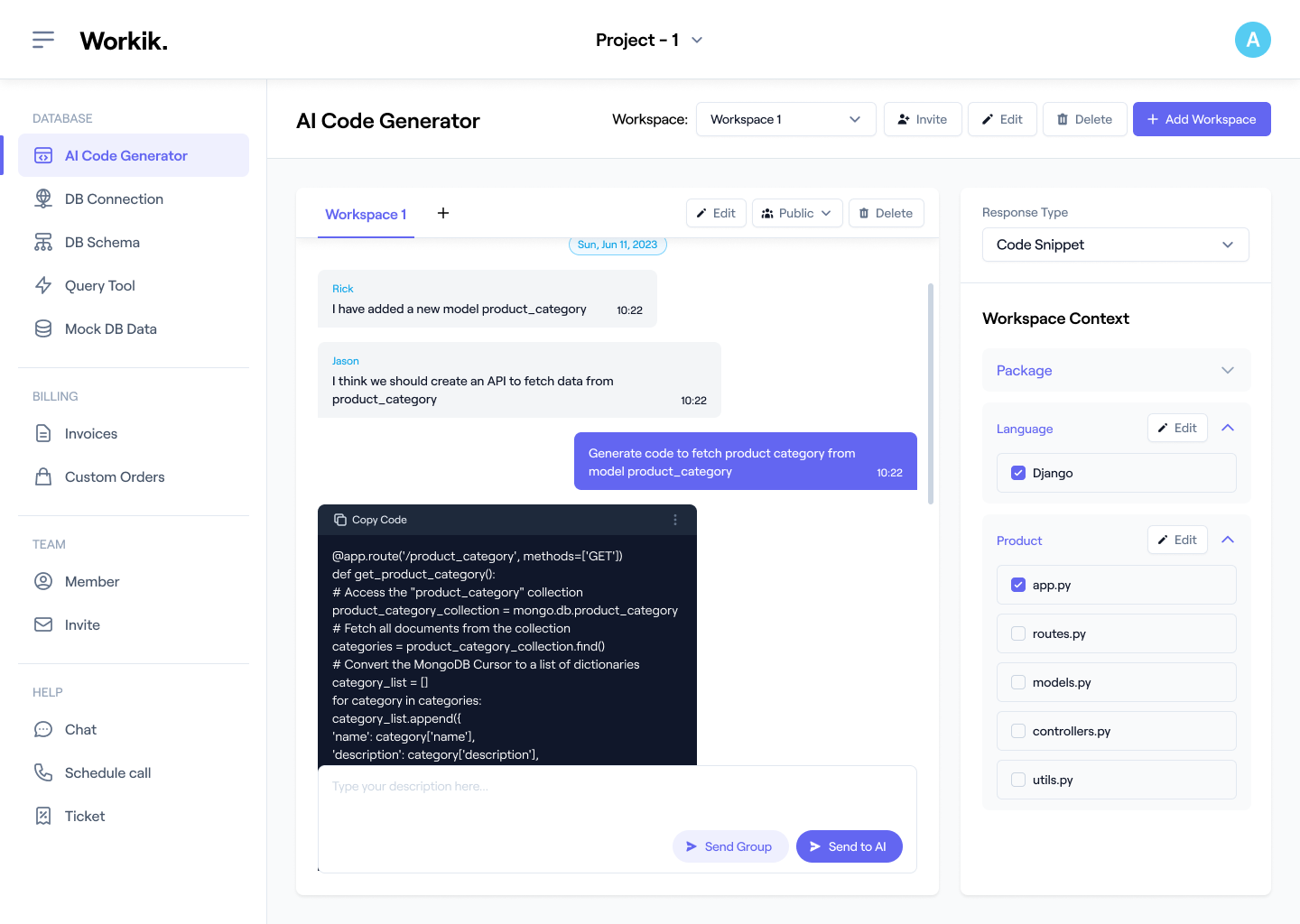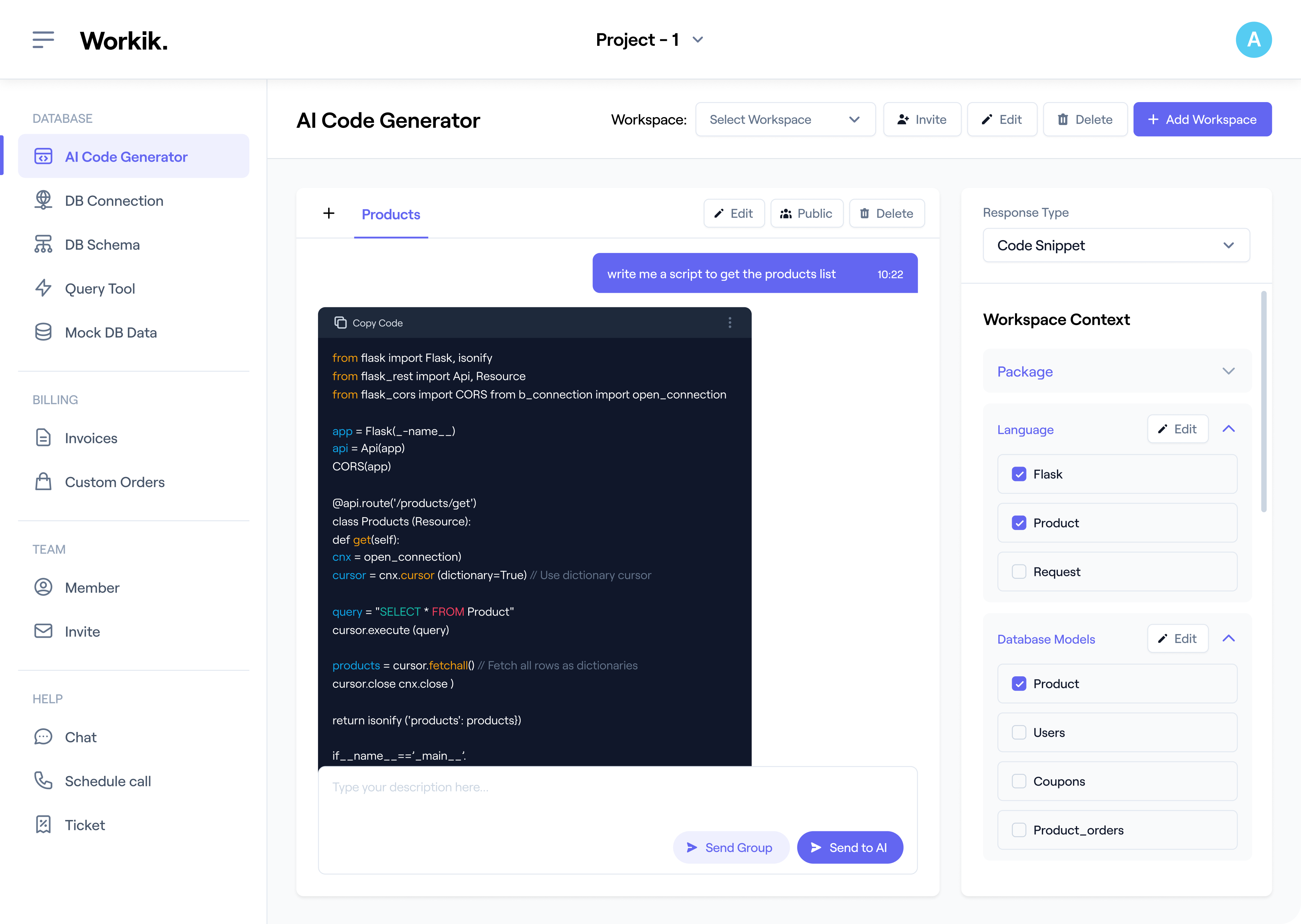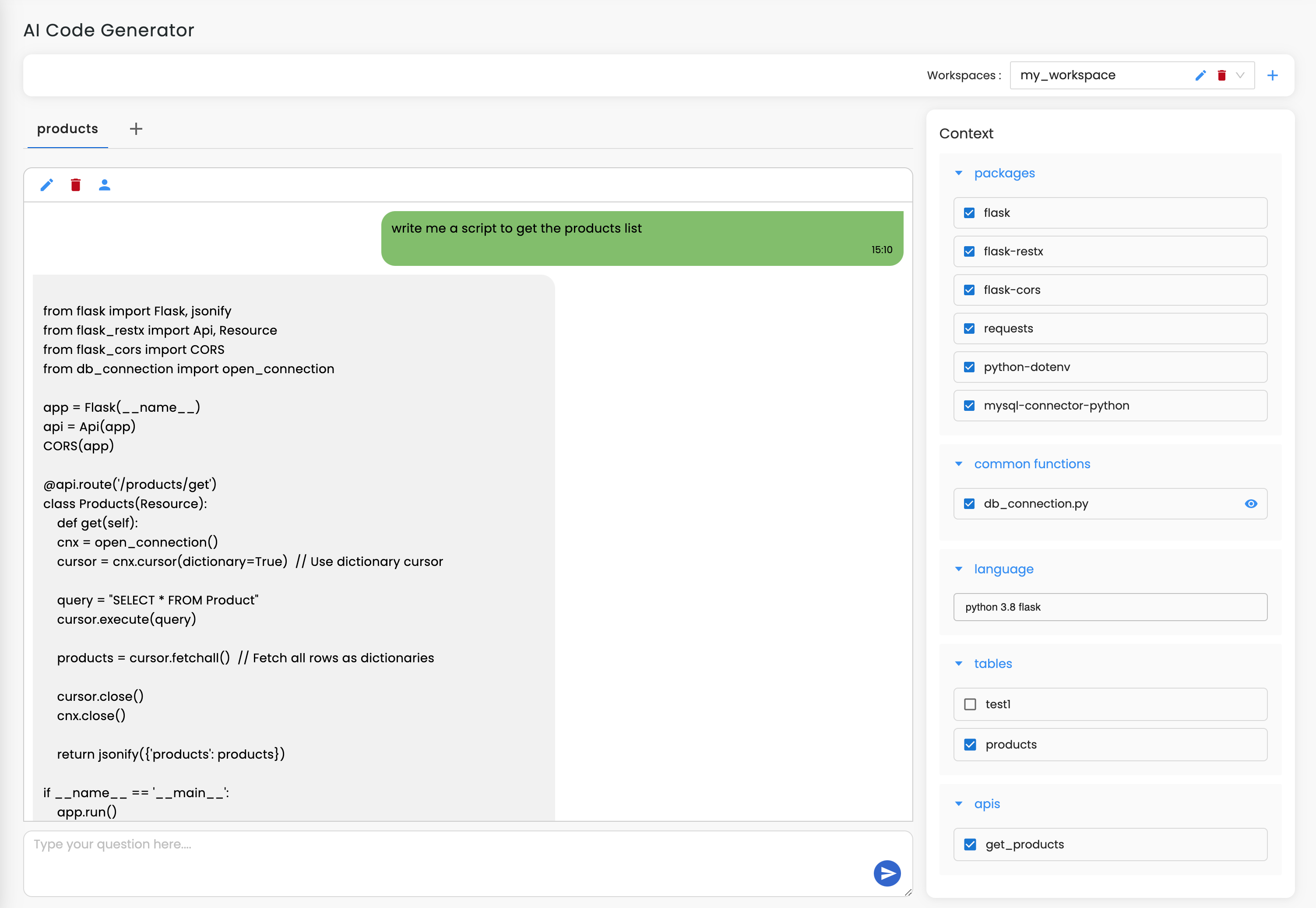
Join our community to see how developers are using Workik AI everyday.
Features

Generate Multilingual Code
AI processes resource files (JSON, YAML) and generates translations using gettext or ICU MessageFormat.

Integrate Localized Strings
AI can seamlessly embed translations into React (i18next) or Angular (ngx-translate) for dynamic language switching.

Optimize Translation Context
AI ensures term accuracy by analyzing key-value pairs & metadata with libraries like CLDR.

Create Resource Files
AI helps produce platform-specific (Android, iOS, and web) outputs like ARB or .strings.
How it works
Create your free Workik account in seconds to access Workik AI-powered localization code generator.
Import resource files like JSON, YAML, or PO and sync repositories from GitHub, GitLab, or Bitbucket. Define target languages, frameworks, and translation rules for AI-driven localization.
Use AI to generate, test, debug, optimize, document code, and more. AI ensures compatibility with platforms like Android, iOS, and web frameworks.
Invite your team to collaborate on localization projects in Workik. Use the AI-generated translations for seamless integration or deployment in your applications.


Expand
.png)
.png)
Expand


Expand


Expand


Expand


Expand


Expand


TESTIMONIALS
Real Stories, Real Results with Workik
Workik AI made localization effortless, generating accurate translations and ensuring cross-platform support.

Emily Davis
Frontend Developer
Workik AI simplified syncing resource files and integrating localization logic seamlessly.

Michael Chen
Backend Engineer
Our team delivers localized apps faster with Workik's streamlined collaboration tools.

Serena Lunther
Project Manager
What are the popular use cases of Workik AI-powered localization code generator?


Some popular use cases for Workik AI-powered localization code generator for developers include but are not limited to:
* Generate translation files in JSON, YAML, or PO formats.
* Manage dynamic language switching for multilingual applications.
* Generate resource bundles compatible with iOS, Android, and web frameworks.
* Optimize cultural accuracy with context-aware string substitutions.
* Ensure consistent term usage across large localization projects.
* Test translation strings with mock UI rendering for contextual validation.
* Streamline bulk language imports using AI-driven automation.
What kind of context can I add in Workik AI related to localization code generation?


Workik offers diverse context-setting options for localization code assistance, allowing users to:
* Sync with GitHub, GitLab, or Bitbucket to integrate existing resource files.
* Specify target languages and cultural formatting rules.
* Define frameworks like i18next, ngx-translate, or ICU MessageFormat.
* Add metadata for contextual translations, such as placeholders or string length constraints.
* Include API blueprints via Postman or Swagger for live data localization workflows.
How does Workik AI optimize translation for niche or technical domains?


Workik AI uses metadata, term glossaries, and domain-specific keywords to generate accurate translations for specialized fields like medical, legal, or technical content. For example, in a fintech app, it ensures terms like “interest rate” or “credit score” are localized accurately while preserving their intended meaning.
Can Workik AI help maintain consistent translations across updates?


Yes, Workik AI keeps track of previous translations and synchronizes changes with existing language files. For instance, if you update a product name in English, AI propagates the change across all supported languages, ensuring consistency without manual intervention.
Can Workik AI handle right-to-left (RTL) languages like Arabic or Hebrew?


Absolutely! Workik AI generates localization code that adapts UI layouts for RTL languages. For example, it reflows elements and adjusts padding dynamically, ensuring a polished user experience in apps with bidirectional language support.
How does Workik AI integrate localization into CI/CD pipelines?


Workik AI supports tools like Jenkins or GitHub Actions. For instance, it can automate the validation of language files during pull requests or run tests to ensure localized strings fit UI components before deployment.
How does Workik AI simplify resource file management for large-scale apps?


Workik AI helps organize and format language files based on your project structure, whether you’re managing separate files for each module or a single resource file. For example, it splits translations by UI components for better scalability in modular apps.
Generate Code For Free

Localization: Question And Answer
Localization is the process of adapting software for different languages, regions, and cultures by translating UI text, adjusting layouts, and formatting data like dates and currencies. It ensures your application is accessible and culturally relevant to users worldwide.
Popular frameworks and tools for localization include:
JavaScript Frameworks:
i18next, ngx-translate
Python Libraries:
Babel, Polib
Resource File Tools:
gettext, ICU MessageFormat
Translation Platforms:
Lokalise, Crowdin
Testing Tools:
Linguist
Popular use cases of localization include:
Global E-Commerce Platforms:
Ensures product descriptions and currencies align with regional preferences.
Multilingual Mobile Apps:
Delivers dynamic language switching for users worldwide.
Enterprise Software:
Enables localized onboarding and support tools for diverse teams.
Gaming Industry:
Creates immersive experiences by translating game scripts and UI elements.
EdTech Applications:
Provides tailored course content in multiple languages.
SaaS Platforms:
Adapts UI text and workflows to enhance user adoption.
Healthcare Applications:
Localizes medical records and user interfaces to meet regional compliance and accessibility standards.
Career opportunities and technical roles in localization include Localization Engineer, Software Internationalization Specialist, Translation Coordinator, Multilingual QA Tester, and Globalization Project Manager.
Workik AI provides comprehensive assistance for localization, including:
Translation File Generation:
Create JSON, YAML, or PO files for supported languages.
Dynamic Language Switching:
Generate code for seamless real-time language updates.
String Context Optimization:
Ensure culturally accurate and context-aware translations.
Resource File Management:
Organize and synchronize large-scale resource files efficiently.
RTL Language Support:
Adapt UI layouts and elements for right-to-left languages.
Integration Support:
Integrate with tools like i18next, ICU MessageFormat, or gettext.
Testing Tools:
Mock UI rendering for translation validation in context.
Documentation Generation:
Generate document translation flows for better maintainability.
Explore more on Workik
Get in touch
Don't miss any updates of our product.
© Workik Inc. 2025 All rights reserved.

